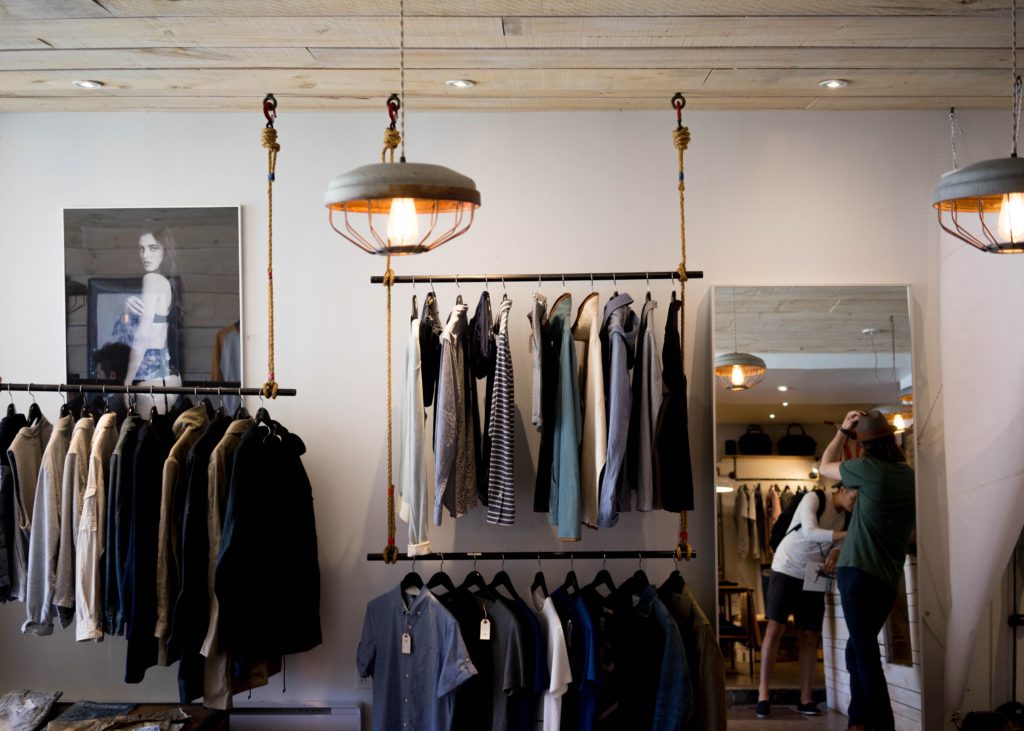How To Learn The Difference Between High-Quality Clothing & A “High-End” Price Tag

When it comes down to money management and day-to-day life, one of the most common advice is to “invest” in long-lasting items, especially when it comes to clothing! From minimalist bloggers to 9-to-5 office fashion gurus, purchasing good quality and long-lasting garments is THE wardrobe-economic rule. We all thrive with a wardrobe that combines being stylish and financially smart!
But while Instagram and Pinterest make it look so easy, in real life, it can be a real headscratcher. Don’t despair! This goal is attainable, but you must understand a few things to get there.
Essentially, it’s important to know the difference between high-end and high-quality. Logic would be that a high price tag corresponds to a high-quality product, meaning that purchasing a high-end product would guarantee long-lasting and high-value merchandise. But that’s not the case, at least not anymore. A few decades ago, companies would create a product, calculate a production cost, factor in margins, and come up with a price in line with the product’s quality. This system is stuck into collective memory and logic — but marketing has changed the game, and that’s no longer how things work.
It’s simple: “high-end” is a marketing strategy. It’s brand positioning. Brand positioning has nothing to do with product quality; it’s all about the customers’ opinion of the brand. High-end branding is using different business elements and strategy to influence your image and make it seem like your brand or product belongs to the elite of its industry. It happens through a company’s long-term investment in its image and customer relationships. Now, it’s not always as dirty as it sounds — every company does it. But not every company is honest in the process.
“High-quality,” on the other hand, is producing an item with attention to its longevity, robustness, design and so on, while aiming for excellence. High-quality products usually require using premium source materials, thus implying a higher priced end product.
The gimmick here is that, with an effective marketing strategy, you can trick most customers into thinking that high-end means high-quality. For instance, this is often used by luxury perfume brands. Making high-quality perfumes requires using high-quality flowers, particularly if you want the “French perfume” label, in which case companies are encouraged to purchase their flowers from a small town in southern France named Grasse. The geology and weather in and around Grasse make it the perfume flower world capital; it is the main flower provider for most luxury brands in and out of France.
Some brands source a portion of their flowers from countries, where the climate allows flowers to grow faster and bigger, and therefore are cheaper than flowers from Grasse. The downside to that is that, due to the elements like climate and soil, the flower essences aren’t as powerful/long lasting, hindering the perfumes quality. Still, some luxury brands mix flowers from Grasse with flowers from other regions to maintain their high-end label and lower their production costs. But these brands are known worldwide for their luxurious perfumes, while Grasse-based perfume brands struggle to gain their deserved prestige. In this case, high-end brands rely on their image as a quality guarantee and misuse the system to provide lesser quality products for higher prices than other brands who are less know but use solely premium source material.
There are multitudes of cases where companies use their high-end image to trick customers into thinking that they are purchasing high-quality products. So, now what? How do you achieve this elusive sustainable and economical, yet fashionable, wardrobe?
1. Be aware and learn to dissociate high-end from high-quality!
Marketing is a tool to provide the customer with information about a brand or a product and like any other information, some are real, some are fake. Learn to spot the fake news! When you see a high-quality product at a price that just seems too good to be true, chances are it really is too good to be true!
2. Like any other investments: Information is key!
No need to become a fashion expert, but try to know things about the basic fabrics, knits and maintenance requirements. This will allow you to know what fabrics suit your lifestyle the best, as well as longevity and quality expectations.
3. Know your brands
Some brands are known for playing the high-end game despite their low product quality. Find information on them, and if you know someone in the fashion industry, even better! You’d be surprised at which brands they say to avoid.
4. Think about it!
It’s fair for a brand to charge $50 for a t-shirt and $500 for an angora cardigan, as these prices can be justified by sustainable manufacturing costs and angora wool price. However, a brand charging $500 for an angora cardigan and $120 for a t-shirt is a red flag. The t-shirt clearly is a marketing move, and you’re paying for the logo. And if the t-shirt price tag is a marketing move, there’s a good chance the cardigan is, too — meaning that the wool is either of lesser quality, from non-ethical/sustainable sources, or mixed with another lower quality wool.
*****
Now, this doesn’t mean you should be suspicious of every brand you meet. But if you really want to invest well these are things you should keep in mind!
Astrid is a 23-year-old digital marketing professional living in Paris. She has traveled a lot throughout her life and has lived in 6 countries in the past 5 years. She is very passionate about financial independence, travel, and morning lattes.
Image via Unsplash
Like this story? Follow The Financial Diet on Facebook, Instagram, and Twitter for daily tips and inspiration, and sign up for our email newsletter here.




